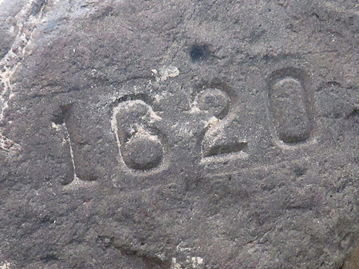The Mayflower and Mayflower 400
Southwark, Mayflower and the Pilgrim Fathers

The Mayflower’s historic voyage is rooted in Southwark. While travelling around Southwark you'll encounter numerous buildings, street names and historical locations that are connected to the Mayflower story. Private Mayflower-themed walks with qualified Blue Badge guides are available from the tour company, Heritage and Arts.
Uncover the Mayflower links in your local area on our heritage blog:
The Mayflower
It appears that only one of the Pilgrim Fathers came from Southwark. The crew however provides many links to Southwark. The most important is the Captain and part owner of The Mayflower, Christopher Jones.
Captain Christopher Jones
Captain Jones was born in Harwich but by 1611 he was settled in Rotherhithe, (then a popular place for sea captains to live) where some of his children were baptised at St Mary's Church. The rector at St Mary's from 1611-1654 was Thomas Gataker, a man of Puritan leanings, and Captain Jones probably learned about Puritanism from him. Also from Rotherhithe was part owner, John Moore, and First Mate John Clarke, after whom Clarke's Island, Plymouth Bay, Mass is named (Clarke was baptised at St Mary's in 1575). Clarke had spent 1611 - 1616 as a prisoner of the Spanish.
Sailing
The Mayflower was an old ship more used to sailing to France than to America. She set sail from close to the present day Mayflower Inn and joined The Speedwell at Southampton before they set sail together for America. The Speedwell sprung a leak forcing them to turn back twice before The Mayflower took on her passengers and finally set sail from Plymouth on 6 September 1620. Land was sighted on 29 October but it was not until 21 December that they found somewhere to land.
The Mayflower remained with the settlers until April 1621 before returning to Rotherhithe in May 1621. Captain Jones died the following March and was buried at St Mary's. John Clarke died the following year on a voyage to Virginia. Many more people from Southwark moved to America over the next few years, including John Harvard, founder of the famous University.
St Mary's Church
Although St Mary's Church was rebuilt in 1715, it contains many memorials to sailors from the original church. Captain Jones' grave was lost during the rebuilding however a new memorial was erected to him in 1995, the 375th anniversary of The Mayflower's historic voyage.
Pilgrim Fathers
Southwark has many links with the Pilgrim Fathers who set sail for America in 1620. However, the story begins before then. In 1586 a group of people were sent to The Clink for refusing to obey the religious laws of Elizabeth 1, thus beginning a tradition of religious dissent within Southwark.
Independents and Brownists
The dissenters founded a prison church under the guidance of John Greenwood, a clergyman, and Henry Barrowe, a lawyer. They called themselves 'Independents' but were also known as 'Brownists' because of the free thinking of Robert Browne, the headmaster at St Olave's School. Another clergyman, Francis Johnson, soon joined them. He had been ordered by the English Ambassador to Holland to buy and burn the books by Greenwood and Barrowe. Inspired by them he came to visit the authors and found himself being jailed with them!
Southwark Independence Church
In 1592 Greenwood, Barrowe and John Penry gained a reprieve and began meeting at a house in the Borough and formally constituted the Southwark Independent Church. However, the reprieve was short-lived and Greenwood and Barrowe were executed on 6 April 1593. John Penry was also executed, at a site near the present day junction between Albany Road and Old Kent Road, on 29 May 1593. Roger Rippon, whose house was used for worship, was arrested and died of disease in prison.
Settlement
On his eventual release, Francis Johnson travelled to Newfoundland looking for a place where religious freedom might be possible. He finally settled in Holland where many of the Southwark dissenters had fled to. The remaining members of the group continued to meet in secret before being brought into the open by Henry Jacob in 1616. Jacob had been influenced by the writing of Johnson and in 1620, some Southwark Church members were permitted to sail to America. It was this group who went on The Mayflower.
Page last updated: 14 February 2024
